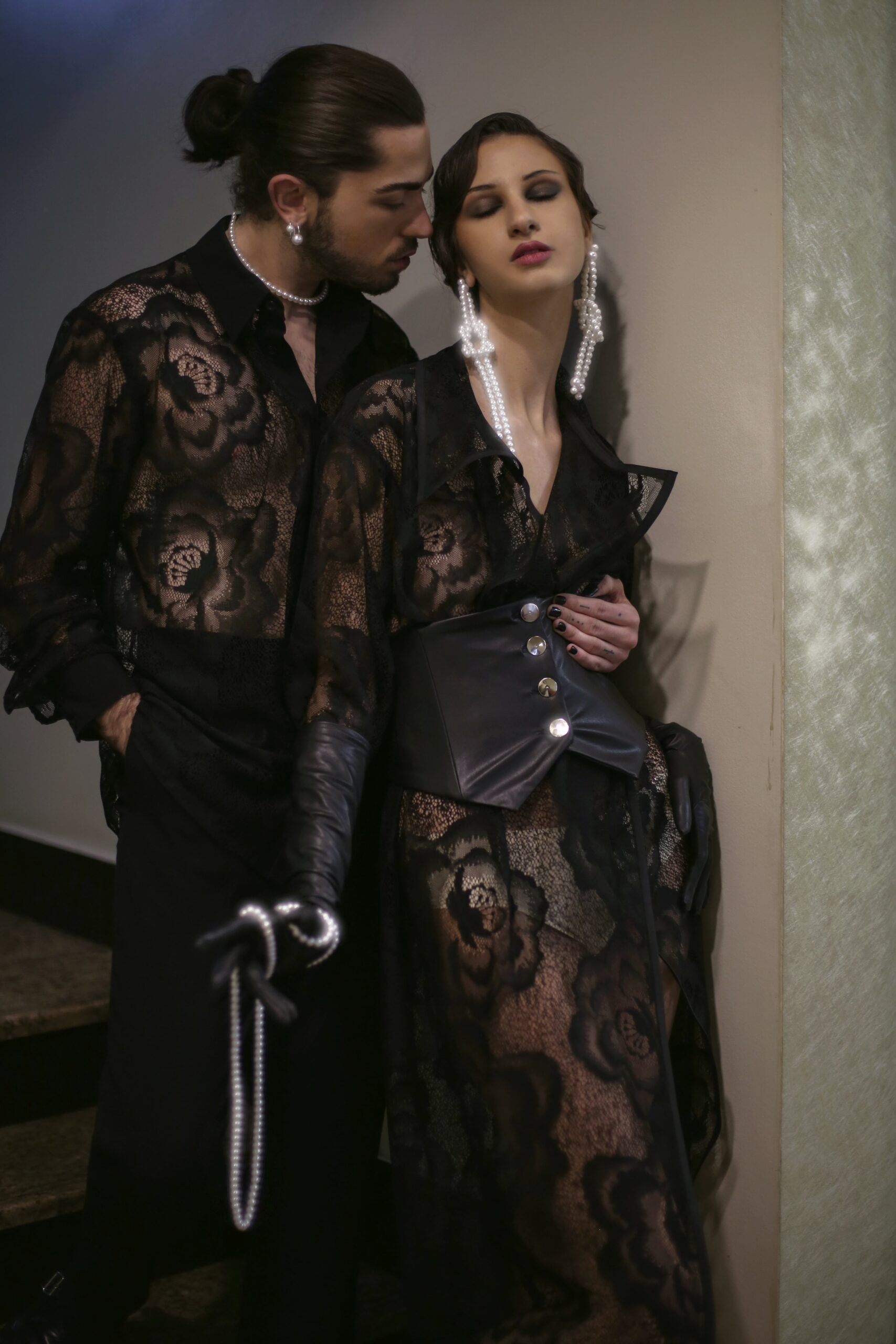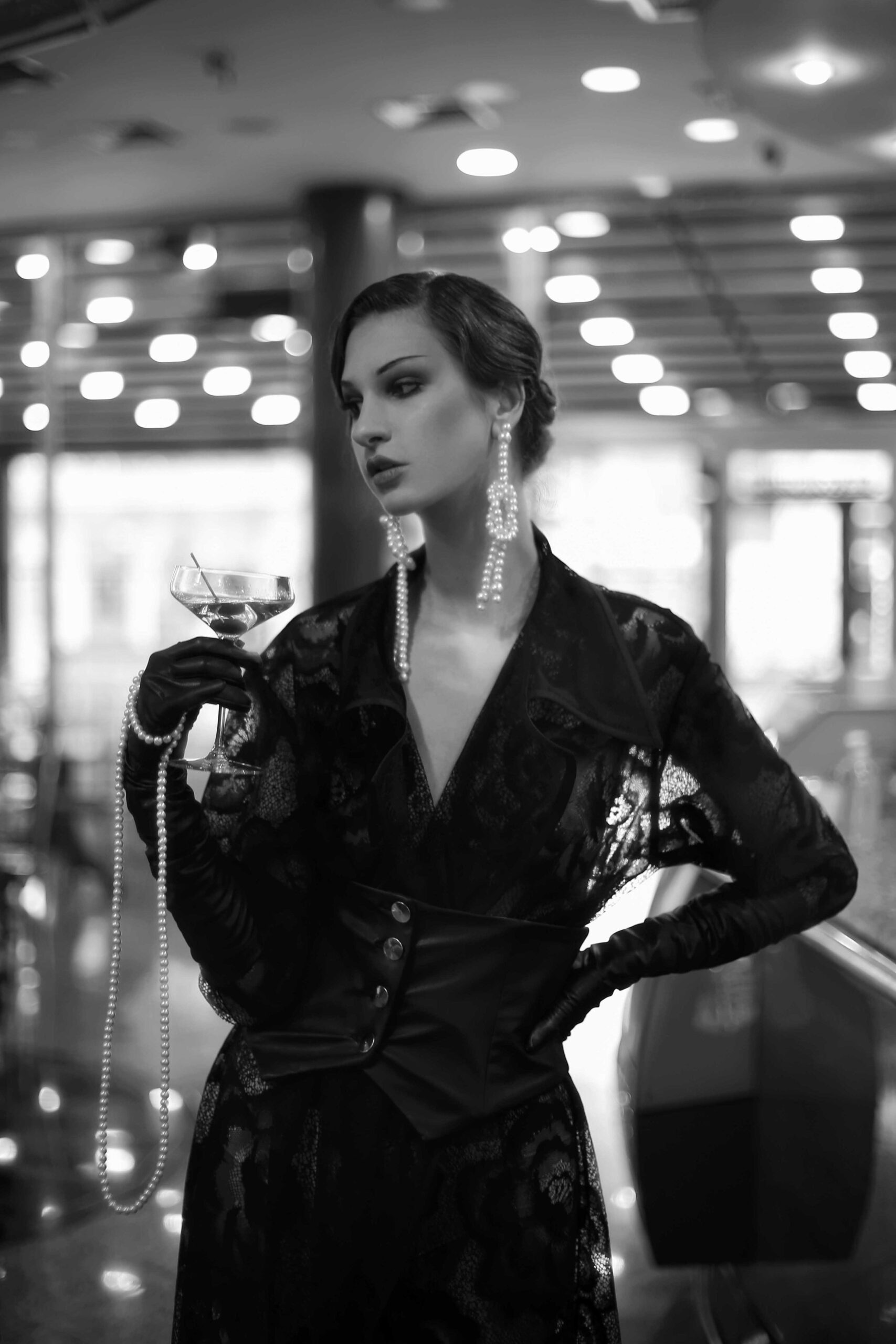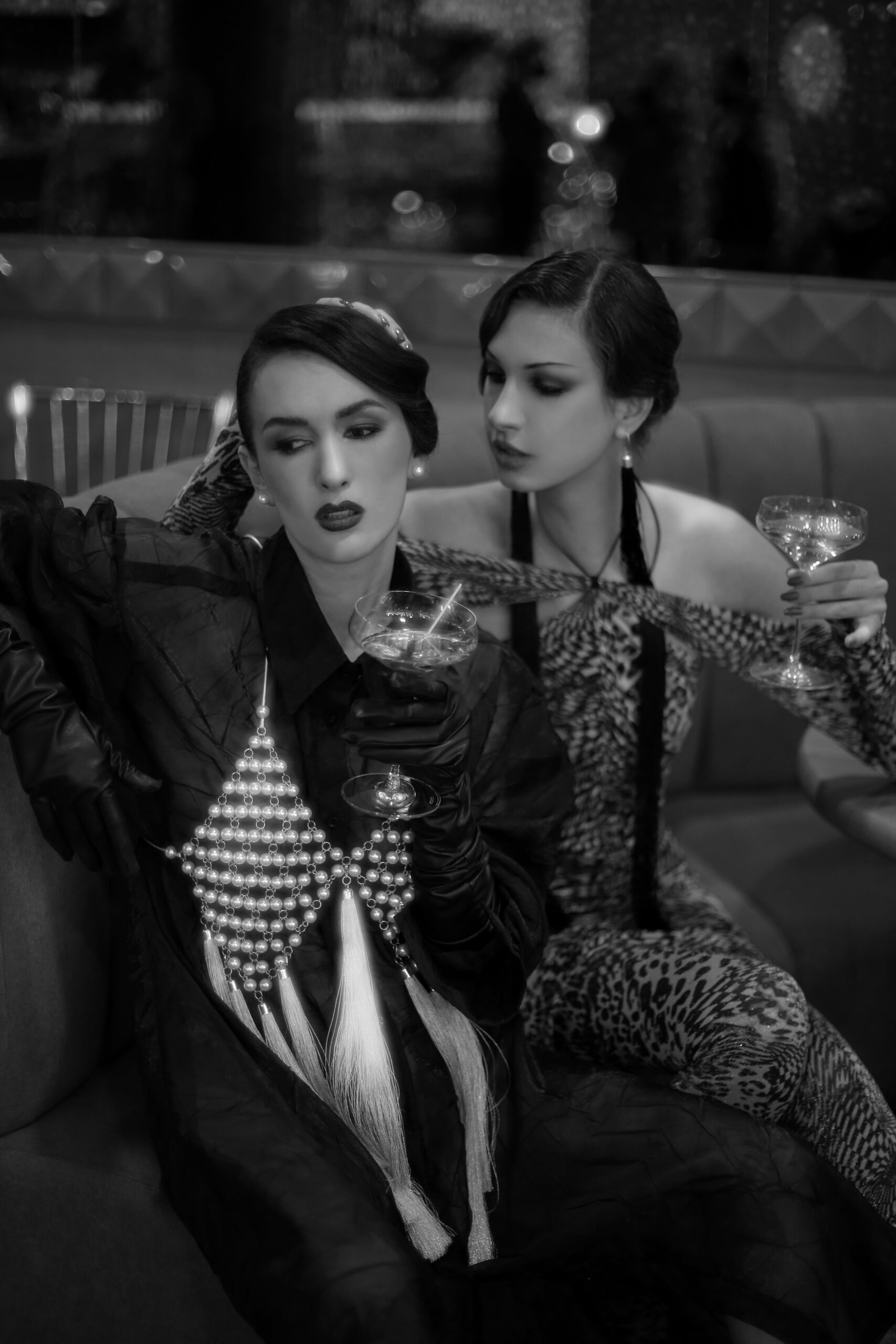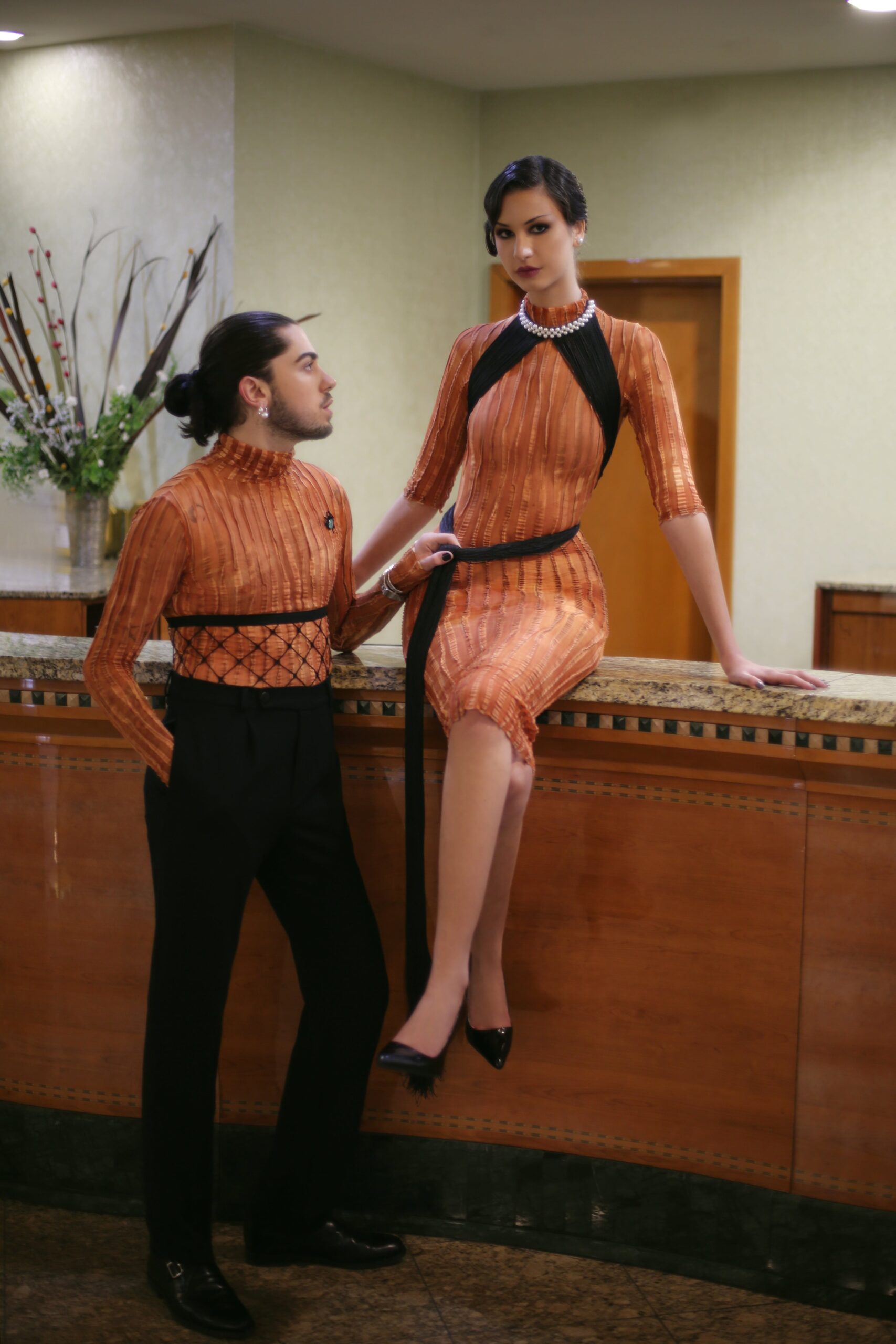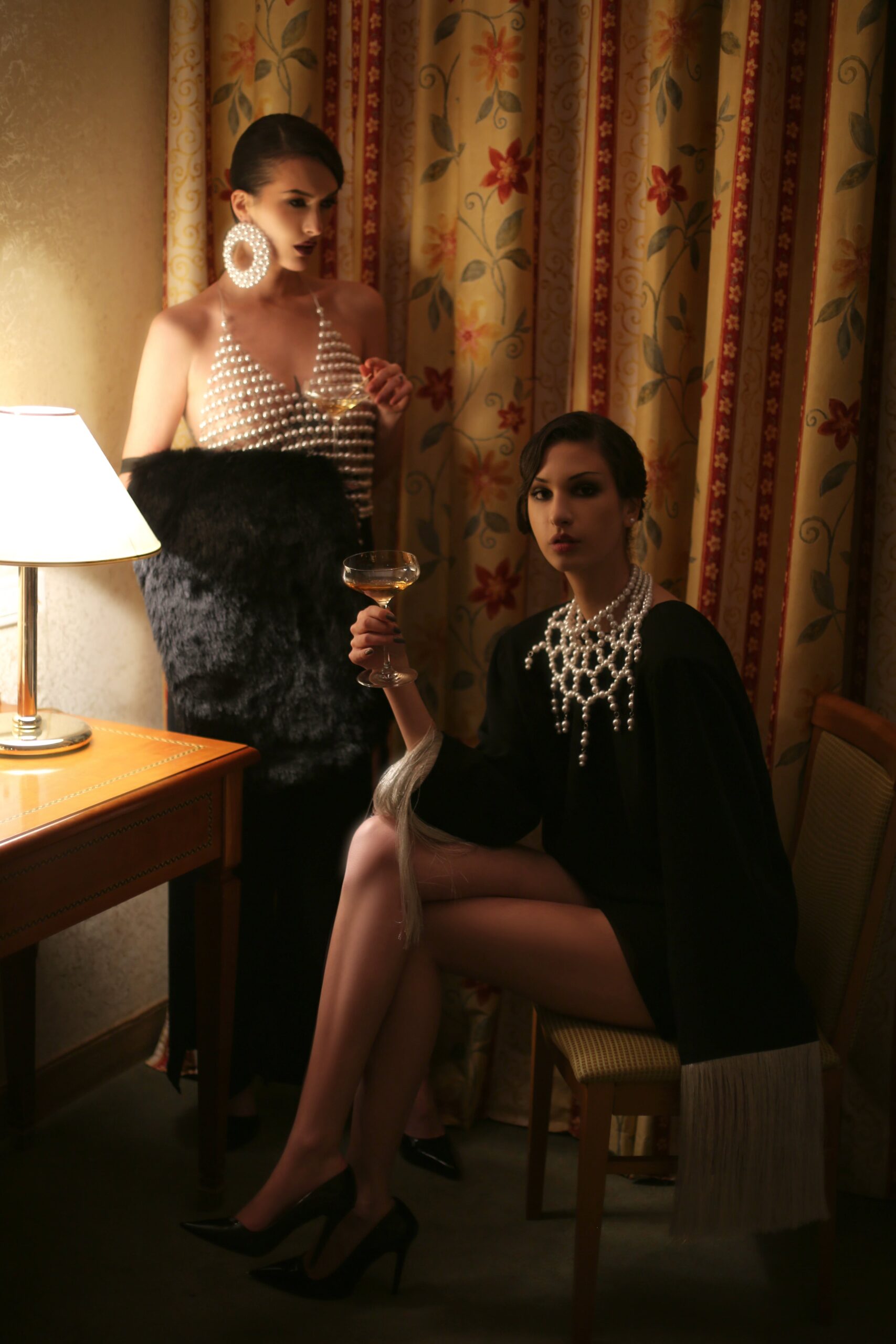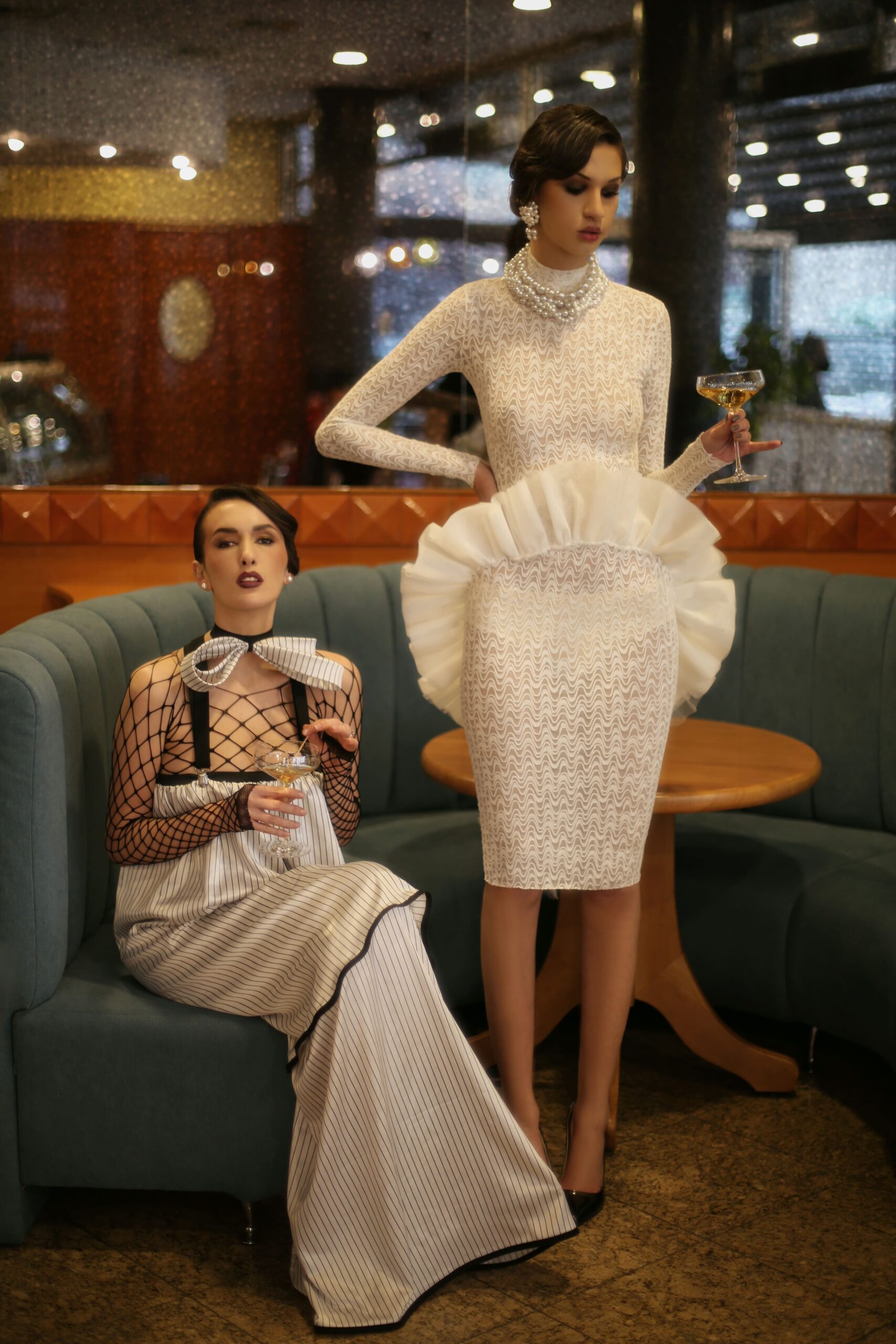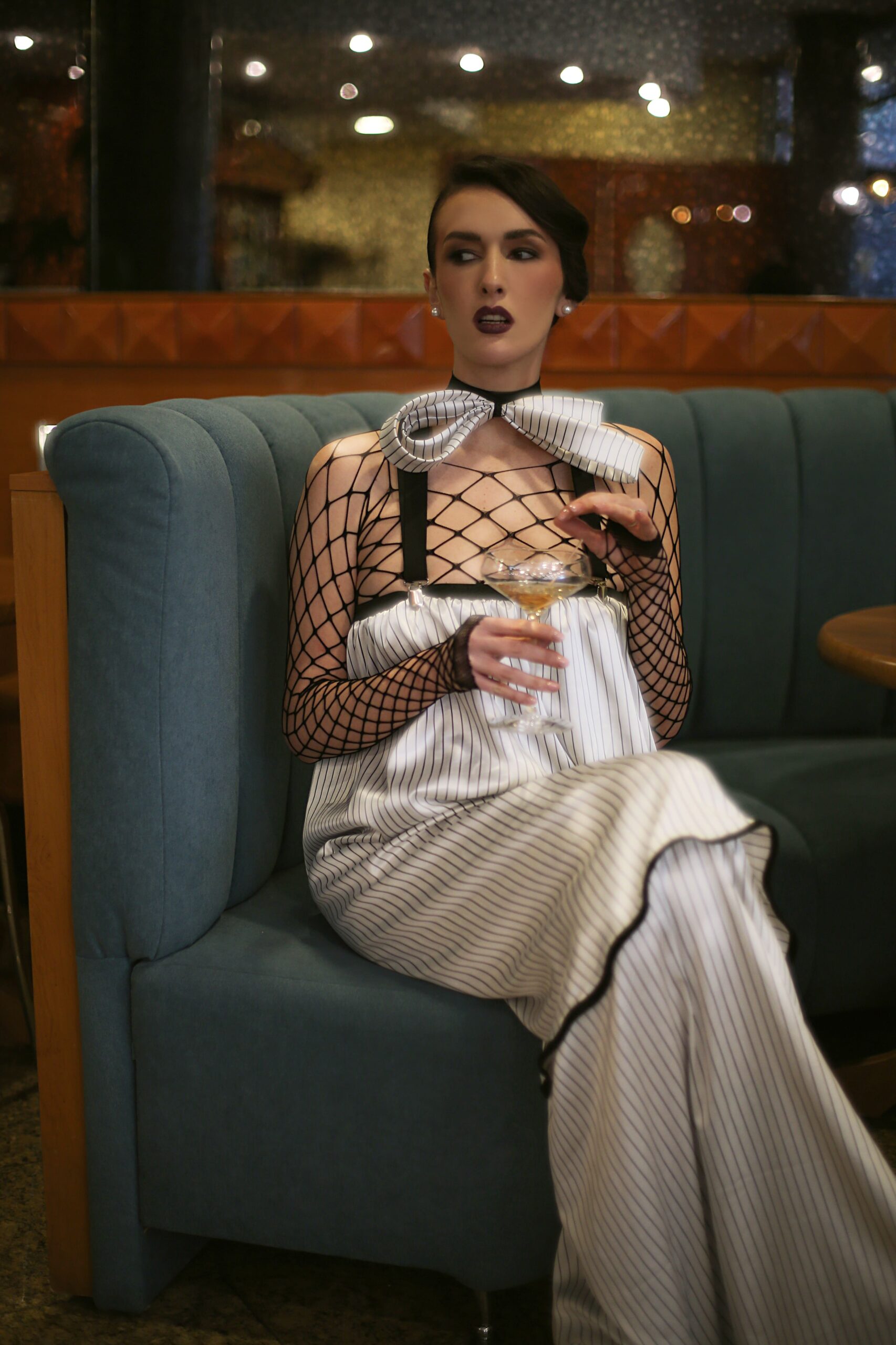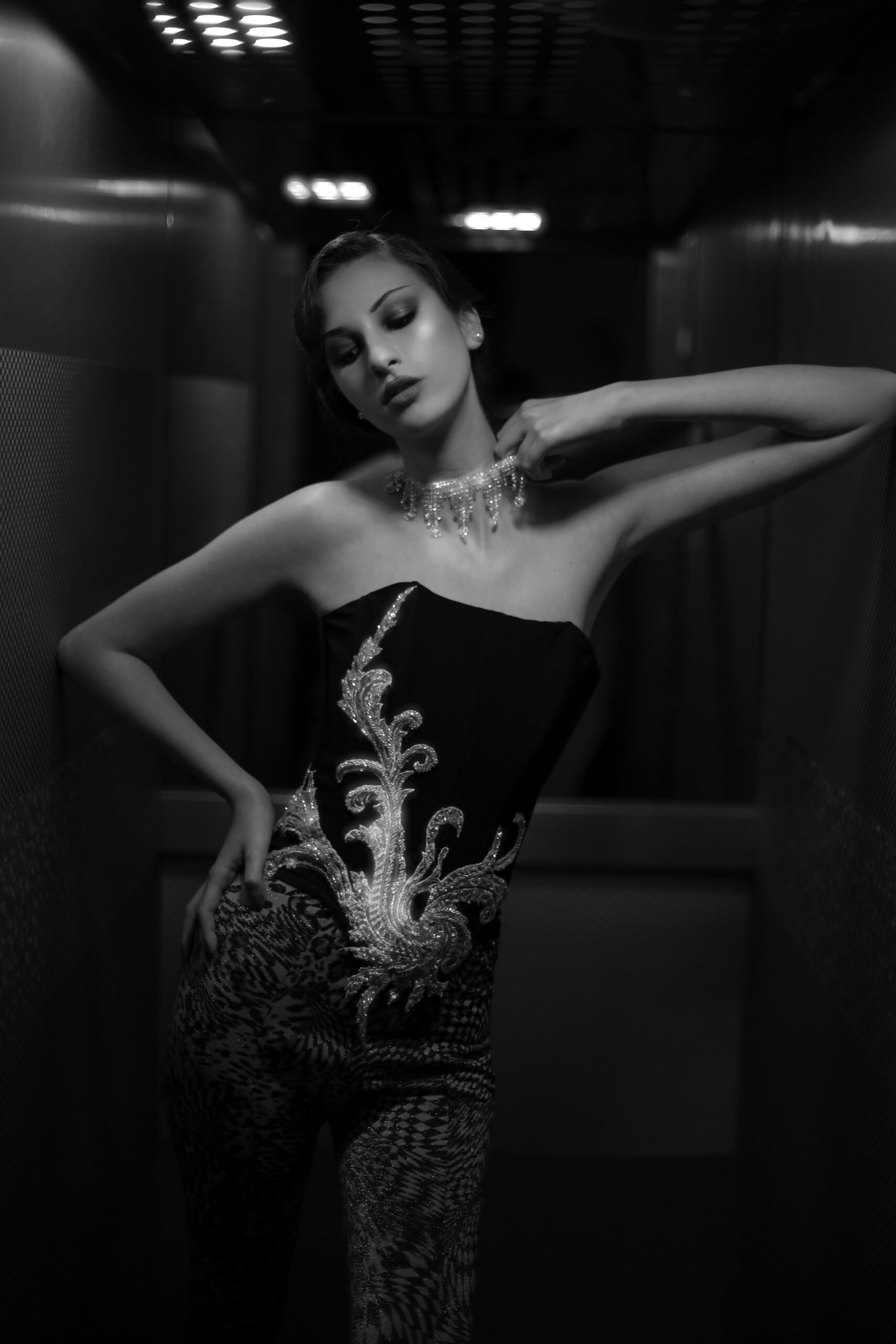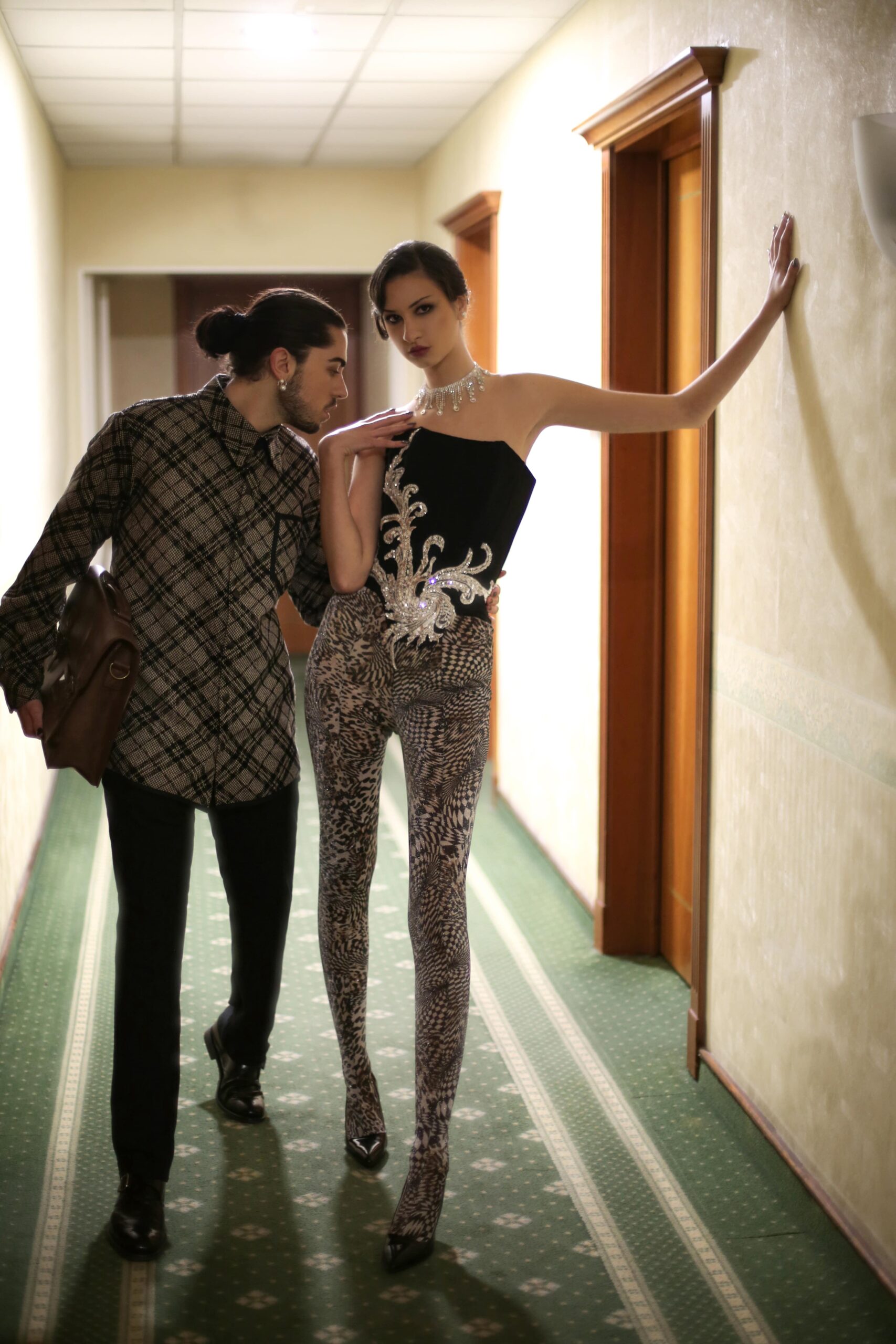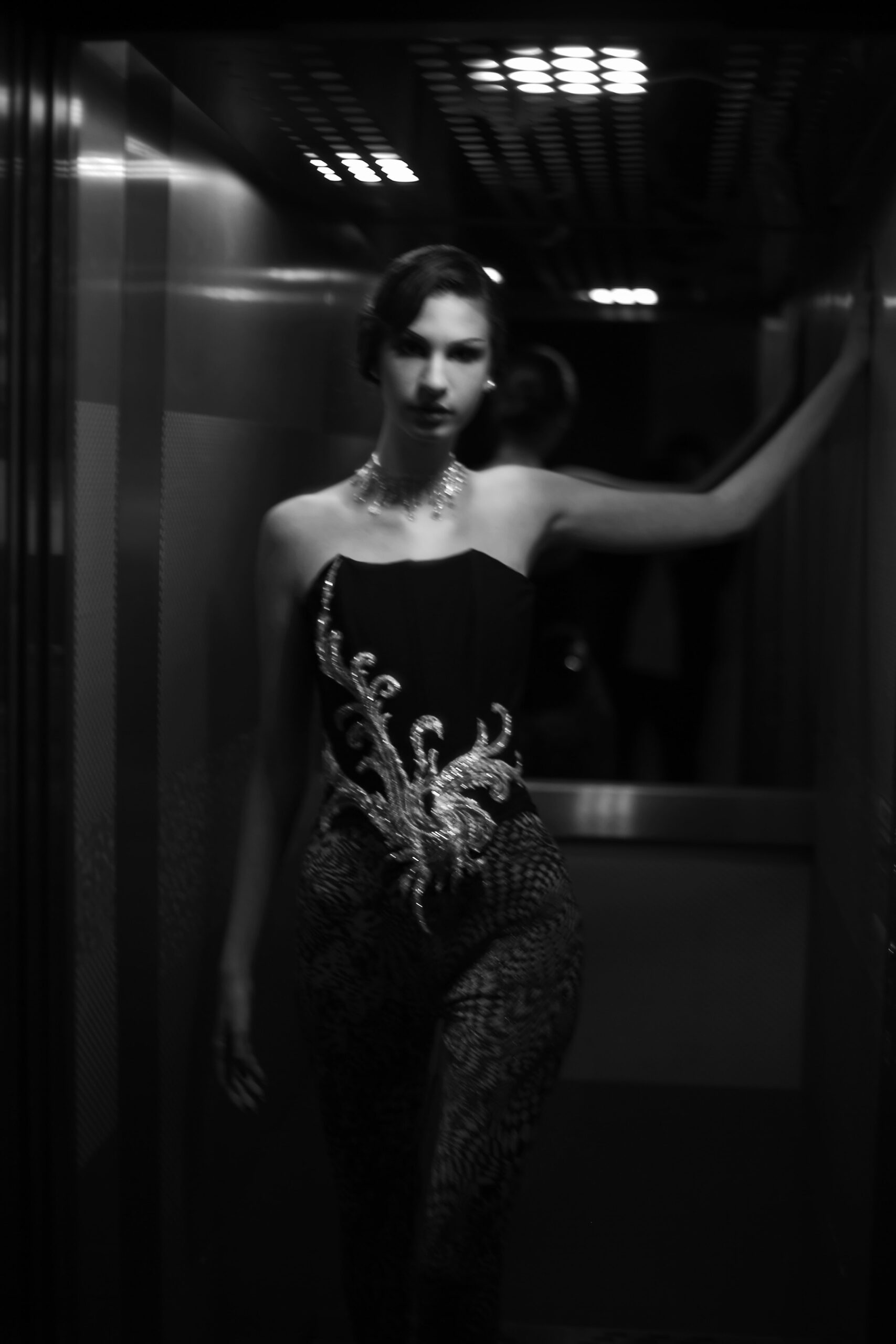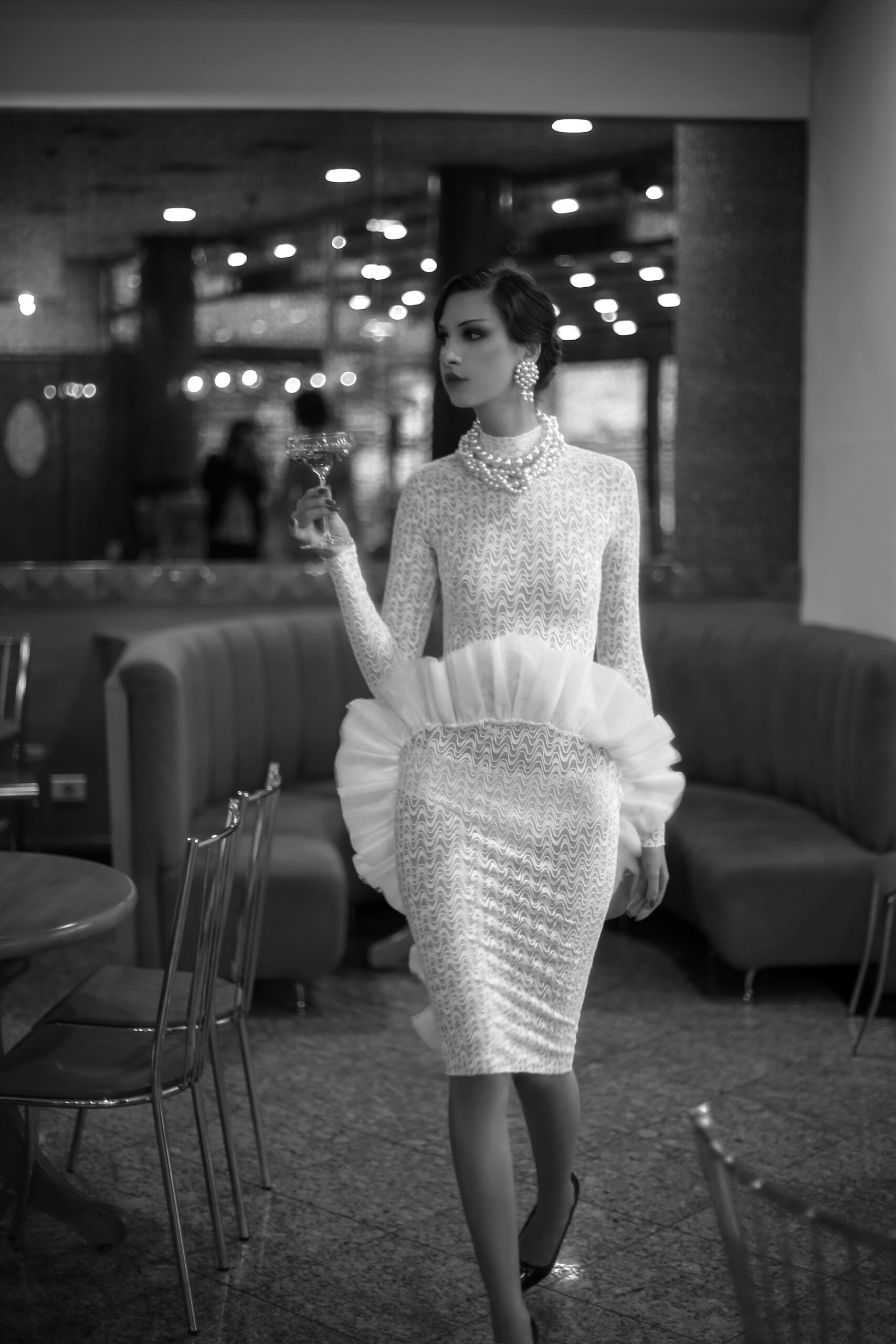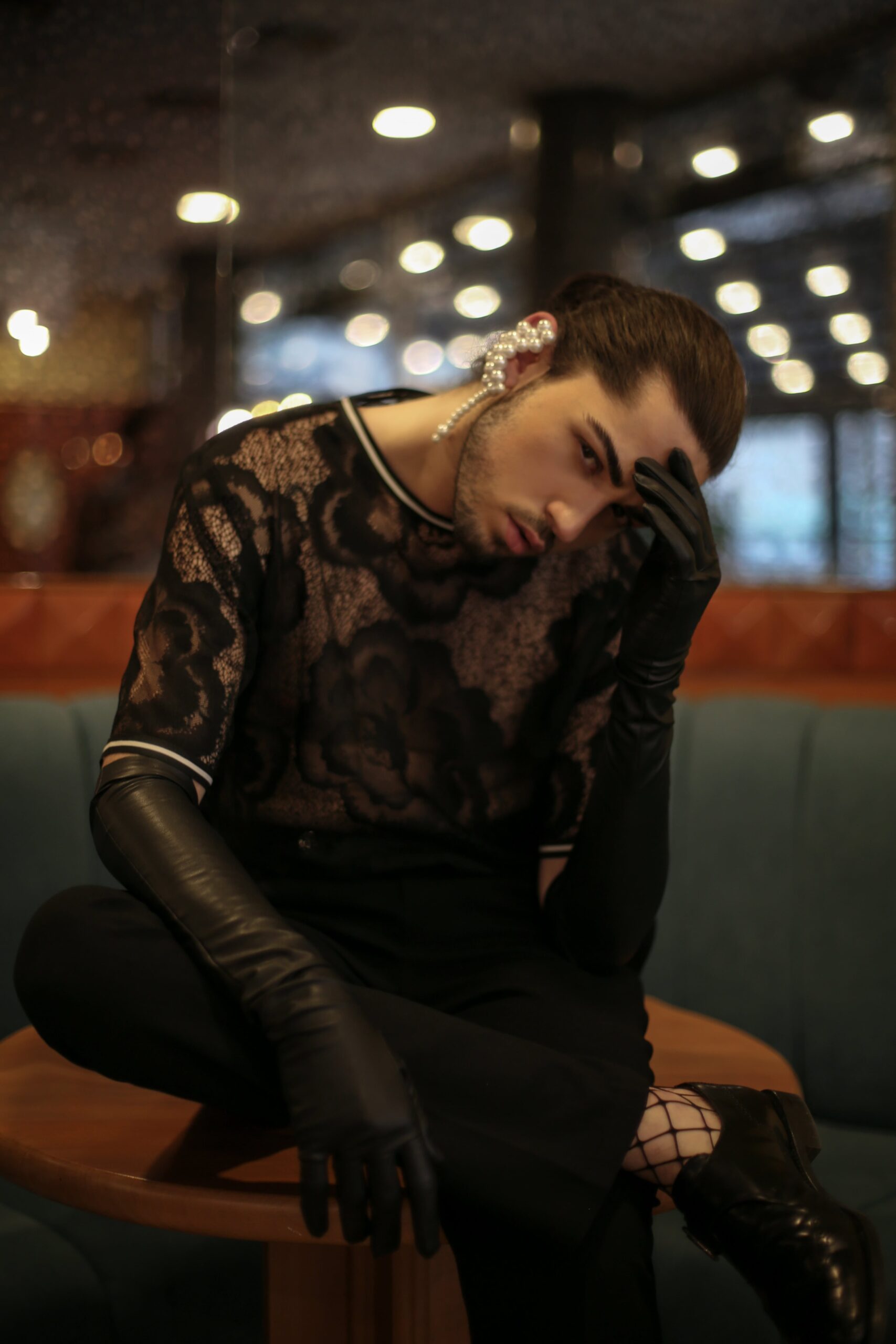Honey
This collection was born out of a nostalgic yearning for a time long gone. Specifically, the collection draws on its inspiration from the Art Nouveau style which proliferated during the 1920s. The collection is further inspired by the music video for the song “HONEY” by the Serbian singer, Maja Berovic.
The collection is comprised of male and female wear in which the corresponding pieces symbolize freedom of movement, sexual orientation, nightlife, and other similar characteristics of the roaring 20s. The materials utilized come from both natural and synthetic materials with a special emphasis on accessories as one of the most prominent Art Deco trends. Each of the present colors carries a certain symbolism. Black represents menace, mystery, and opulence. Red represents love, passion, and rage. Brown symbolizes seriousness, warmth, and support. On the other hand, orange stands for attraction and the emphasis of thirst. The “I” silhouette, characteristic for the 20s, takes center stage within the collection. The same holds for the shape of the male suit. The female jewelry has mostly been made from pearls which were considered to symbolize purity and luxury. However, the collection also contains brooches and zircon jewelry, including metal details. Another absolute trend of the roaring or golden 20s were the purses and gloves which are also included in this collection. Additionally, the word “HONEY” was very commonly used amongst couples in the 1920s.
However, this word is also very representative of the time period itself. During the 1920s, people possessed a hedonistic approach to life, with everything appearing to be honey and sweets. The period was characterized by heightened indulgence in sex, alcohol, parties, music, and overall life enjoyment without much concern for the consequences. The accompanying fashion editorial carries the same name, HONEY, which as the result of collaboration between the photographer Stefan Sokolovski and fashion designer Hristijan Mladenovski, has the designer placing himself within an autoreferential system as a model, representing the vibe of the 1920s.




